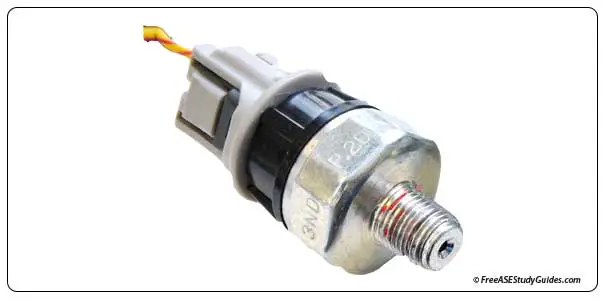Oil Pressure Switch

The oil pressure switch sends a signal directly to the driver's instrument panel or the engine control module. It indicates if the engine's oil pressure has fallen below a critical level of ~ 3-10 psi, depending on the engine. Gauge sending units are often variable resistors, but the sending units for the instrument panel's warning lights, like the oil pressure light, are simple switches. The switch can be normally open or normally closed. They are usually normally closed switches; this is why the warning light illuminates when the ignition switch is first turned on and goes out after the engine starts and oil pressure rises.

The switch in the illustration is a typical, normally closed oil pressure switch. Unplug the connector and set the meter to Ohms to check for continuity. Place the positive probe against the terminal and the negative probe against the body. First, test the switch with the engine not running; the contacts should be closed. The meter should display zero. Then carefully check the switch with the engine running. When the engine runs, the oil pressure increases beyond the preset value, and the contacts should open; the meter should now display infinity. Depending on the vehicle, it may be easier to remove and bench test the switch with regulated air pressure and a multimeter set to Ohms.